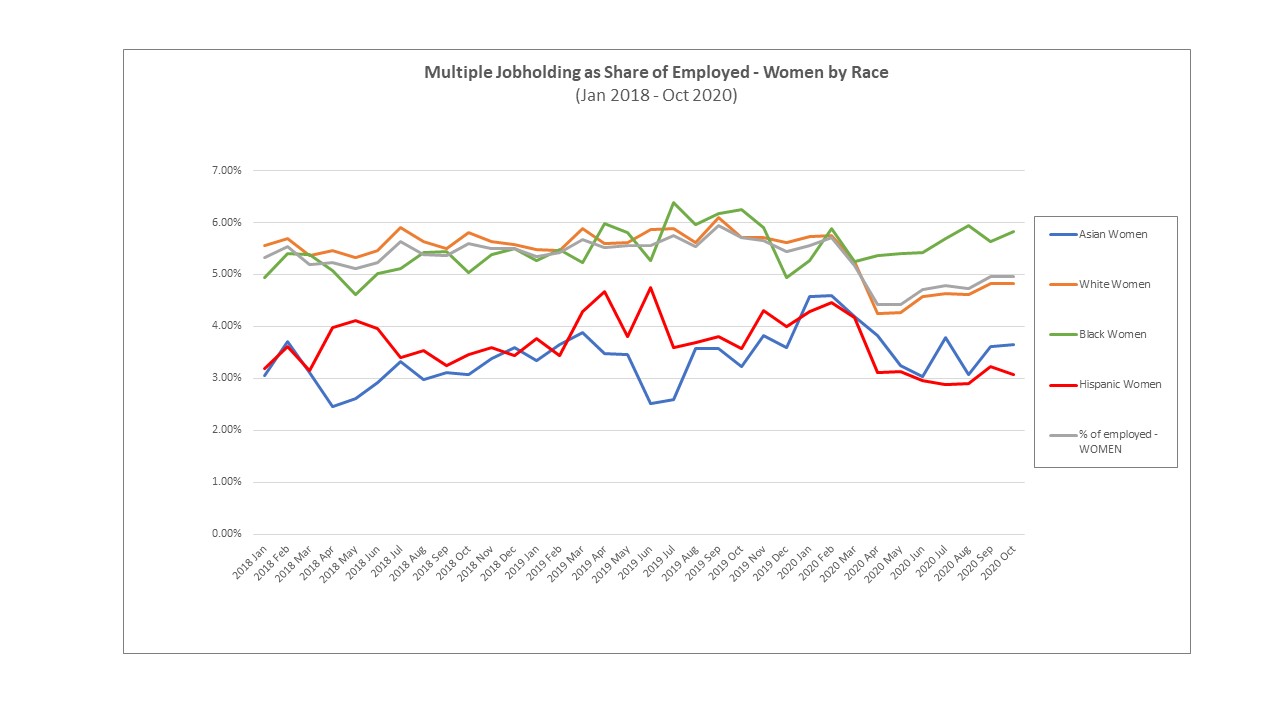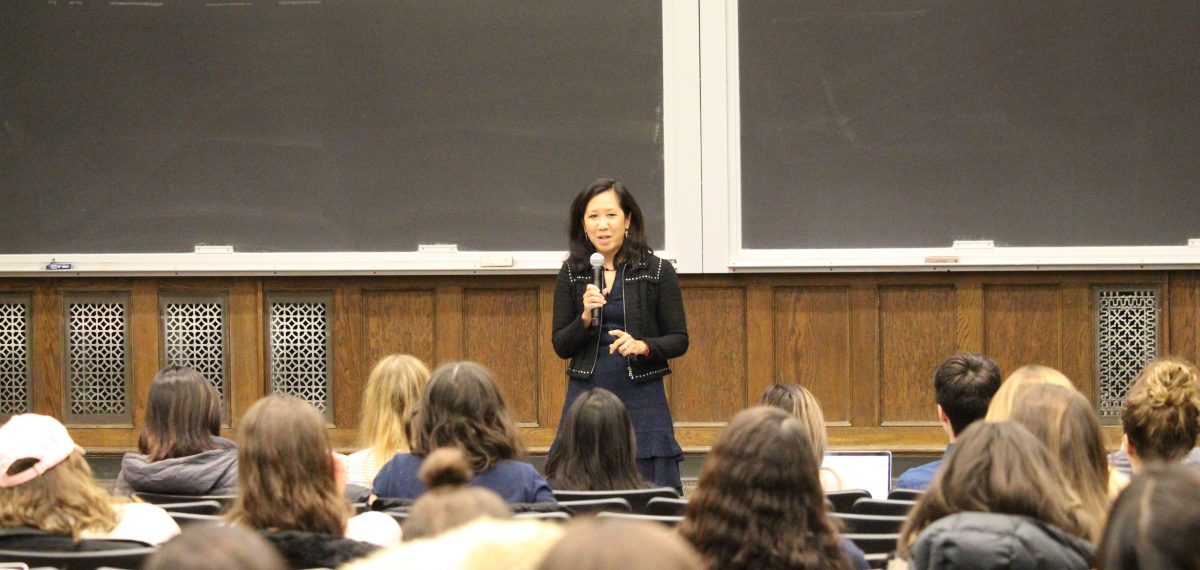With Joe Biden having won the presidency as of yesterday (11/7/20), the new labor market data that came out the day before was amazingly aligned with voting patterns, which show men more often voting for Trump, women and especially women of color more often voting for Biden, and Trump (vs. Biden) voters more likely to put the economy (vs. the pandemic) as their biggest concern. The Bureau of Labor Statistics’ report on the monthly employment situation, and their underlying survey data (not all published in the report but accessible here and here) show that while the labor market continues to improve since its worst point this spring, the continued severity of the pandemic continues to weigh on women’s work far more than men’s. The “SheCession” (or is it “She-session” as Heather Long of the Washington Post recently called it… either works to me) is still an acute condition, particularly for women of color.
Below are the latest numbers (in table and charts) on unemployment by race and gender categories and comparing the current Pandemic Recession to the Great Recession. Through September, only Asian women were still at a higher level of unemployment than at the worst point of the Great Recession. As of the latest data for October, all race-gender categories have seen unemployment continue to fall to the point where even Asian women are now (slightly) better off (at 8.3% unemployment) than they were at the worst point of their Great Recession experience (which was 8.4%).
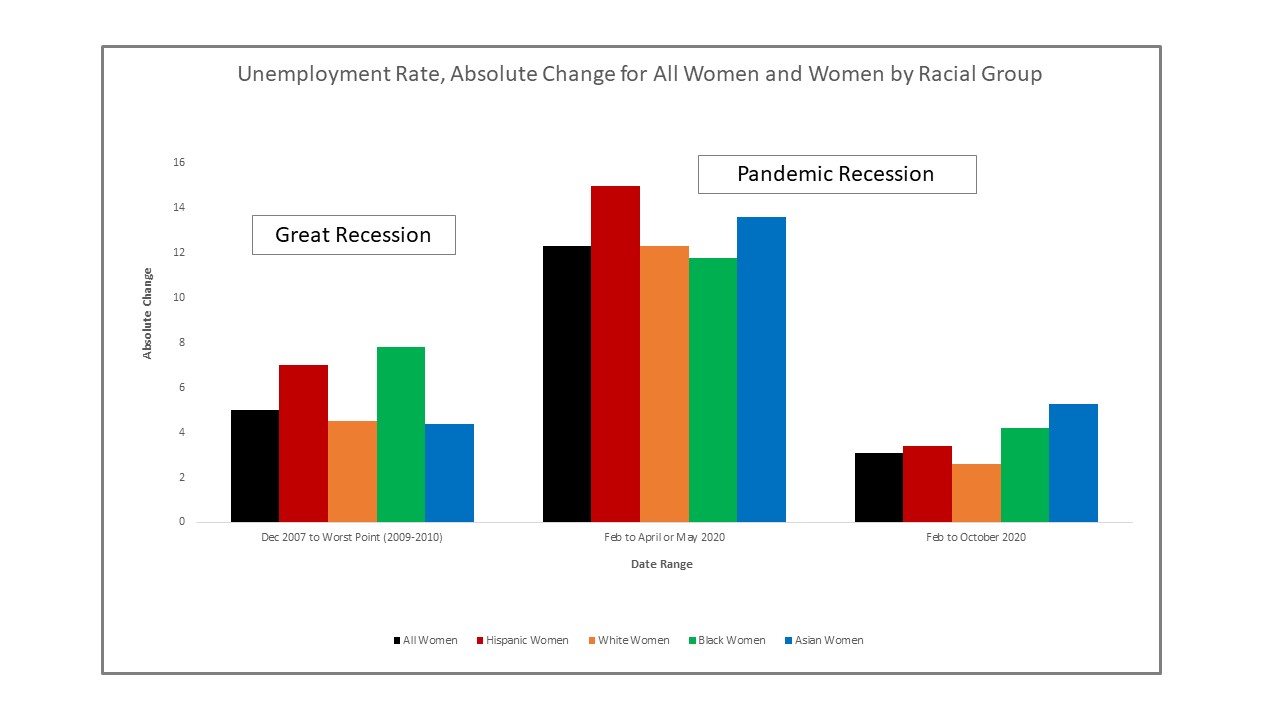
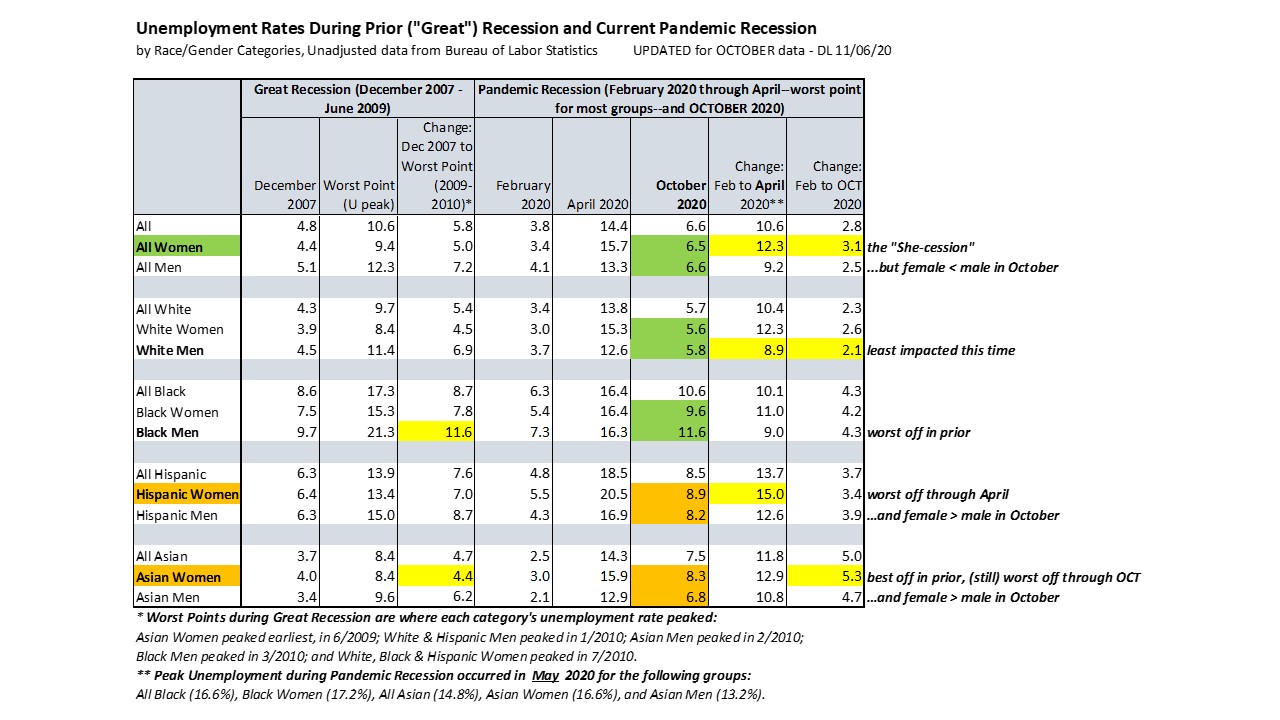
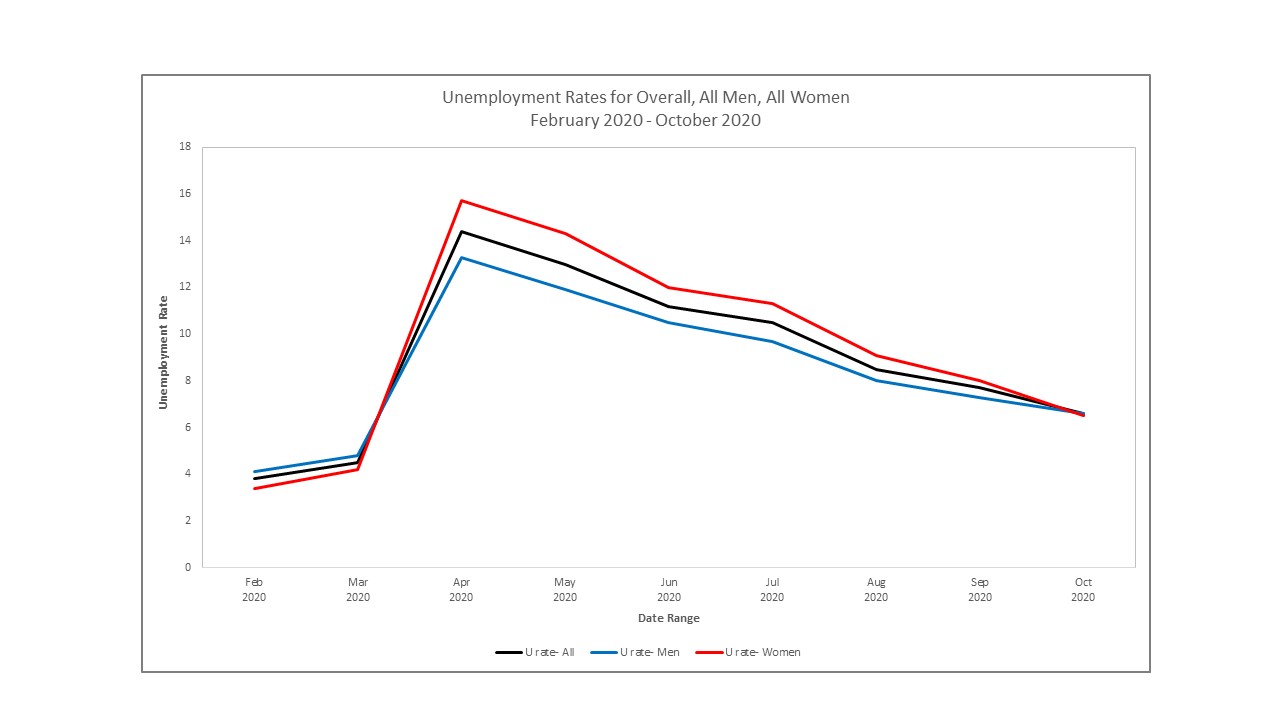
October is the first month since the start of the pandemic that we saw the overall female unemployment rate (at 6.5%) fall below the overall male unemployment rate (at 6.6%). But the differences across race are stark: among Hispanics and Asians, female unemployment still exceeds male unemployment. Factors driving the “SheCession” on both the demand and supply sides of the labor market make the explanations complicated and impossible to generalize. (Further interdisciplinary study–starting with interviews and focus groups, then moving to more detailed surveys and analysis of collected data–is needed.)
The larger toll of the pandemic on working women doesn’t just show up in the unemployment rate measure–which is still nearly double its February pre-pandemic rate and which can be misleadingly reduced when people drop out of the labor force entirely, which reduces the numerator (# of unemployed) by a larger proportion than the denominator (# in labor force = # unemployed + # employed). The “SheCession” also shows up in the employment-to-population (E/Pop) ratio:
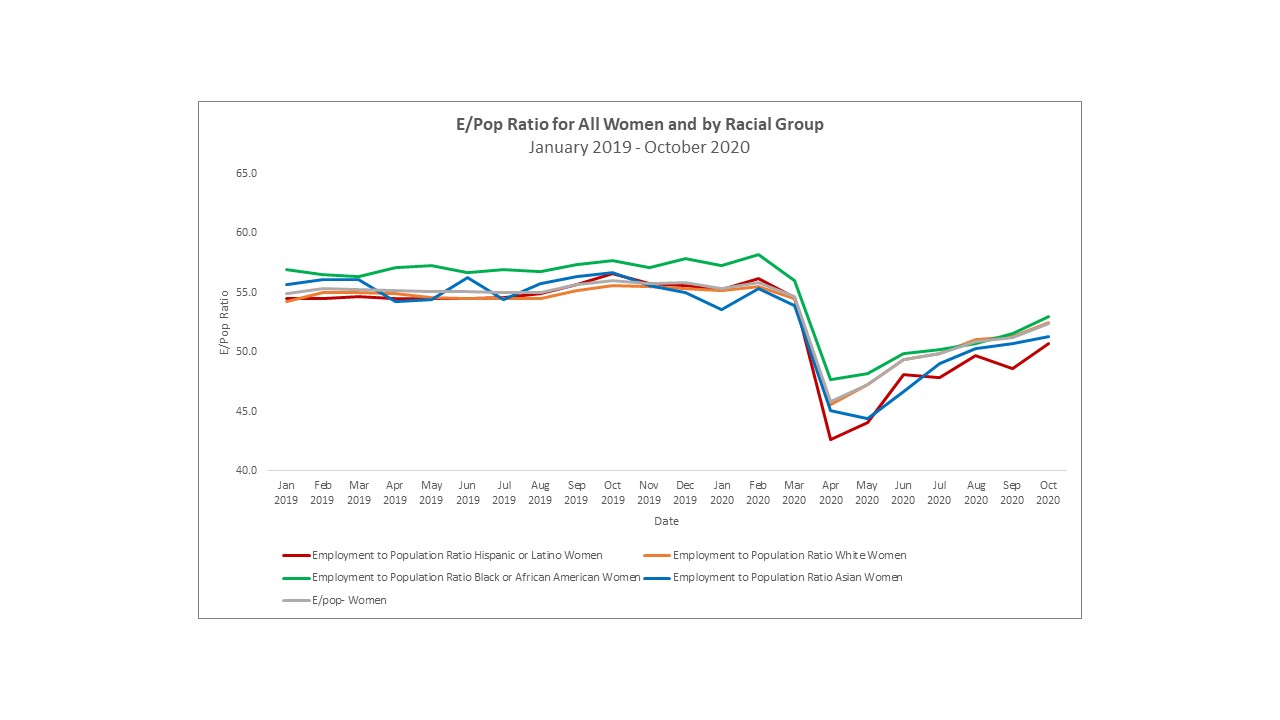
And the SheCession shows up in the multiple jobholding data, where working women more commonly than men work two or more jobs (as has always been true because women more commonly work part-time rather than full-time jobs whether by preference or not), but in the pandemic recession have had to piece together and juggle multiple jobs along with their unexpected and unpredictable caregiving responsibilities at home. Note that during the pandemic we have seen the distribution of multiple jobholding among women widen across both race and age categories–with Black women and the youngest women most likely to be working multiple jobs:
